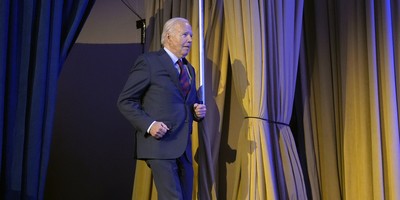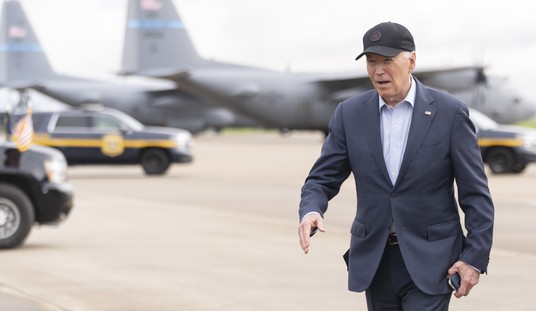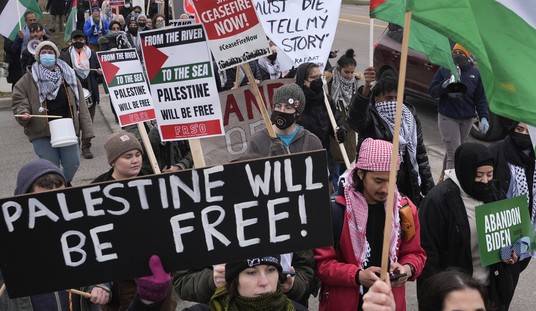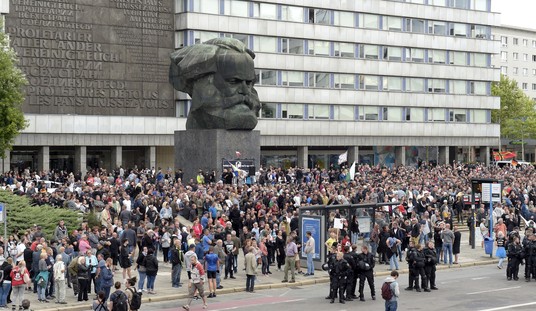One of the issues causing -- and prolonging -- Russia's current political instability is the complete breakdown of the Kremlin's power clans.
When Prime Minister Vladimir Putin came to power in 1999, he began creating a complex organization comprising many ambitious and powerful people to help him rule the country. Putin understood that he would need a mix of people who could handle Russia's need for tight security and control in the short term but strategize for a more modern and liberal economy in the future -- seemingly conflicting aims, but Putin saw both as necessary to address the problems facing the country.
Though there are countless small groups and loyalties among those in the Kremlin, Putin's system can be divided essentially into two clans -- the siloviki and the civiliki. Two very ambitious (and at times ruthless) men ran these clans: Deputy Prime Minister Igor Sechin, who ran the siloviki, and Vladislav Surkov, who ran the civiliki and was recently demoted from first deputy chief of staff. Each man controlled large portions of government bureaucracy, state companies and critical instruments of control throughout Russia. It was an arrangement in which two groups with starkly different backgrounds, ideologies and strategies would be played off each other, and Putin's personal ties to both groups would put him in a position of ultimate power. This allowed him to select which policies to put forward that might not be too appealing to certain elements within the Kremlin. It also kept these ambitious politicians concentrated on each other and not on Putin, who was seen as the great stabilizer.
The Clans
The siloviki clan primarily consists of security hawks and former operatives with the KGB (now known as the Federal Security Service, or FSB) -- like Putin. The siloviki primarily fall under the control of Sechin, who played a major role in centralizing the Russian economy and ousting foreign influence over the past decade. Political power brokers like National Security Chief Nikolai Patrushev, Duma Speaker Boris Gryzlov (who has since been removed from his position) and NATO envoy Dmitri Rogozin bolstered Sechin's strength. The siloviki's goal has been to create a tightly controlled, globally strong Russia at the expense of individual rights and democracy. Over the past decade, the siloviki arguably have been the stronger of the two clans, implementing policies of consolidation in Russian business, uniting politically under one party (United Russia) and aggressively pushing Russian influence into Moscow's former Soviet sphere.
Recommended
The siloviki's rival clan, the loosely organized civiliki, comprises liberal-minded economists, social strategists and non-KGB-linked politicians who worked with Putin in St. Petersburg in the 1990s. The civiliki are not as consolidated in their views as the siloviki; essentially, the factor uniting them is that they are not siloviki. Though the civiliki clan has evolved during the past decade, Vladislav Surkov -- who exerts most of his power behind the scenes and who has worked closely with Sechin in the past -- has run it recently. Although their agendas vary, the civiliki primarily want to create more liberal and complex financial, economic and social policies for Russia -- not really pro-Western policies, but policies that are more focused on social and economic needs than security. Though sidelined for most of the 2000s, at the end of the previous decade the civiliki's plans started to gain prominence.
The Shift and Breakdown of the Clans
Although the clans' conflict has been contained over the last decade, the struggle to maintain a balance between them has always been an issue. Though the siloviki's policies for Russia mostly dominated the 2000s, it was a civiliki that Putin chose to succeed him as president in 2008 in an attempt to maintain the balance. And as Russia grew stronger and more stable both internally and in its near abroad, the Kremlin was able to shift its focus from Russia's security to its future -- meaning that a few more liberal social and economic policies could be considered. The problem was that this political shift threw the Kremlin clans off balance. It came as Russia was about to face ripple effects from the European financial crises, and as a change in political sentiment in Russia -- the rise of the Communists and protest movements -- began. The problem with the Kremlin clans' balance might have been handled more easily if not for these other factors, but the timing of these events led to a complete breakdown of the clan system.
Although numerous political moments over the past two years can be said to have led to the Kremlin crisis, a few crucial events were the major contributors to the imbalance:
- When the civiliki's policy suggestions began taking precedence, the Kremlin had to rein in the siloviki's ideology of economic centralization and their control over major businesses. This threw the siloviki into disarray and displaced most of their power base. It was during this time that Sechin reportedly became ill and stepped out of the spotlight, leaving numerous political heavyweights to struggle for dominance.
- The civiliki were put in charge of economic projects (like the modernization and privatization programs) and social programs (such as the All-Russia People's Front and "managed democracy") to prepare the country socially and politically for the future. But the civiliki -- who never were really united -- began fighting among themselves about how to implement these changes. As the financial and social crises began erupting in Russia, the civiliki's plans started to show cracks. This is where public disagreements between the civiliki chief, Surkov, and Russian President Dmitri Medvedev started (as well as the very public row between Medvedev and then-Finance Minister Alexei Kudrin).
- The Kremlin's social and political policies engineered by Surkov failed to take into account the growing anti-Kremlin sentiment among the population. Putin had put an exorbitant amount of trust in Surkov's schemes to win over the people, contain dissent and maneuver through the Kremlin clan politics throughout the years. The most recent plan, "managed democracy," was meant to smooth Putin's transition back into the presidency by creating smaller "independent' political parties that the Kremlin controlled behind the scenes, giving the appearance of a more democratic Russia. The scheme failed, as it was obvious to those outside and inside the Kremlin that this did nothing to make room for actual independent sentiment. This was one of the many failures that prompted dissent within Putin's political party, United Russia, and helped spark the rise of the Communists and the various protest movements.
With the siloviki already struggling, the civiliki collapsed. Surkov was demoted, Kudrin left the government to work with the protesters, and the civiliki were left without a leader or organization or much power. Both clans broke down completely at a time when the anti-Kremlin movements started to rise and elections were on the horizon.
Putin Reacts
Putin's reaction to these circumstances was slower than his responses to similar incidents in the past. Previously, when there was dissidence in the streets, Putin had a loyal team that would respond, and when there were problems within the Kremlin typically he had one clan organized to make up for the other's shortfalls. In this instance, Putin seems to have used a twofold response: He used short reactionary fixes to quell the instability to a degree while he began designing new economic and social policies and rebuilding the Kremlin clans. The quick fixes he employed were as follows:
- Putin reacted to the decline of his party -- and rise of the Communist Party -- in the recent Duma elections by sacking one of his party's senior members, Gryzlov, as speaker of the Duma. Putin replaced Gryzlov with another, more moderate member of the siloviki who is technically adept at handling a parliament in which United Russia lost the supermajority: Sergei Naryshkin.
- In response to the mass protests, Putin drastically demoted his social and political strategist, Surkov, for the failure of the "'managed democracy"' plan among others. Surkov publicly acknowledged his own failures. However, Putin cannot get rid of the former civiliki leader altogether because, although he might have been abandoned by most of his clan, the one portfolio he holds could be dangerous to all of Russia if left unmanaged: Chechnya. Surkov is the handler for Chechen President Ramzan Kadyrov, who is keeping the instability in the Caucasus at a low simmer for the time being.
- Putin has also answered the rise of anti-Putin and anti-Kremlin sentiment in the country by allowing some political and social reforms to take place. He has also reined in many of the siloviki who would prefer to respond to dissent by violently cracking down and arresting the protesters en masse and clamping down on the Communists by arranging a "change in management" for the party.
Putin is buying time to start grappling with the much deeper issues of forming new social, political and economic policies and rebuilding a network among his loyalists and Kremlin elites. His previous plan took a decade to reach fruition, but he does not have that long this time, as Russia's presidential election will be held March 4.
Putin is starting with a new social and political policy being designed by Surkov's replacement, Alexander Voloshin. Surkov's strategy had always been extremely complex, with a great deal of emphasis on appearance, but Voloshin seems much more straightforward in how to handle the rise of anti-Kremlin groups in the country. Stratfor sources in Moscow have said that Voloshin has been given until mid-February -- just weeks before the election -- to formulate a plan.
A new economic policy to accommodate the anti-Kremlin movements' demands for a policy change and the rippling crises from Europe being felt in Russia appears to be on hold. The reason for this is that during the clans' breakdown, the Kremlin's chief financial mind -- Kudrin -- defected from Putin's side. There are other economists in the government, but Kudrin orchestrated Russia's growth and stability over the past decade. He also understands the need to balance liberal economics with Russia's national security. Stratfor sources have indicated that Putin wants Kudrin back in the government. Kudrin has named his price to return: the premiership, so that he does not have to answer to anyone but Putin. It is not clear how this would be received, since Kudrin has been flirting with anti-Kremlin movements and the premiership had long been promised to Medvedev.
Rebuilding a clan system in the Kremlin is more problematic, as there are many powerful personalities with different agendas to consider. The civiliki have shattered into countless factions with no uniting figurehead. Should Kudrin come back to the fold, he could be savvy enough to lead a new version of the civiliki, though it is too soon to tell. Just recently, the siloviki seem to be reconsolidating. Sechin is working again, and the clan has no real opposition to its agenda. In order to ensure that the siloviki do not make too many opportunistic moves, Putin has brought back an older senior leader of the siloviki who understands that a balance in the Kremlin is needed: Sergei Ivanov.
Putin is rebuilding his clan system as well as he can while juggling Russia's other problems. On Jan. 23, Putin vowed that once the presidential election had passed, he would make far-reaching personnel changes. He said this does not mean everyone will be fired, but there would be some major reshuffles. In the past, Putin has not been squeamish about sacking some of the country's most powerful figures, and he could consider this the best time to set up a system around him to help him lead an increasingly complex Russia for years to come.
Click here for Part 1: An Overview of Political Changes
Reprinted with permission of Stratfor.

























Join the conversation as a VIP Member